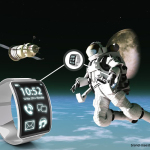How Useful is Pivotal Tracker for Designers?
In this era of cutting edge technological advancements, it is essential to have agile development methods to manage software development projects. By using a cloud based pivotal tracker for designers you can obtain the agility that makes project management an easy affair. By introducing this unique project management tool, you can make the work of a developer and manager, easier than what it used to be in pre-cloud days. Even a mobile application designer finds the agile development techniques useful.
![]()
Pivotal Tracker for Designers: What Is It?
It is a cloud based project planning software that is used to render you a less expensive and less time consuming approach to manage assignments. Given the fact, that there are many resources in your business, operating from different places, you need to cut down on the expense for multiple user licenses. This project management utility can help in avoiding unnecessary costs incurred due to multiple user licenses. It is easily accessible from any computer with an internet connection, thus helping in cost cutting and quick solutions. It has an intelligent user interface and can tell you, what all needs to be done in your assignment, only by looking at the page of the assignment.
Pivotal Tracker for Designers: What are its outstanding features?
If you want to know how to use the tracker in designing, you can ask the mobile application designer in your team and he will give you detailed information about the features of the software and their uses.
Here are some characteristic features of the modern day project management software that help in designing:-
Stories:
You must be wondering what pivotal tracker for designers have got to do with story. For your information, a story is the smallest unit of every project. It is a one liner about the features that need to be interpolated in an assignment. The arrangement, of stories, happens depending on their priority, with the most significant ones standing at the top.
Stories are categorized into 3 panels. They are current, backlog and icebox.
Current panel:
It is the list of stories a team is currently working on.
Backlog panel:
It is a list of all the stories that your customer wants your team to do. This is the panel from where the team members search for stories they have to work on, once they are done with the current stories.
Icebox panel:
Whether you are starting on a new assignment or adding stories to an existing project, the icebox is the place where all unimportant stories are stored.The customer of your team can feed stories from the icebox to the backlog as per his needs.
Tasks:
Stories can be extended by tasks which define the list of stuff to be done before a story is declared complete. This way the designer will know what is still left to be completed.
Comments:
The tracker enables team members who are working on a certain task to add remarks, so that others operating on the given work can understand how far the task has been done and how far a story has been completed. For example, when working on a mobile application, the mobile application designer will make comments to inform his team members of the progress he has done and also to avoid the additional task of sending emails.
Features, bugs, chores and releases:
Stories are divided into four distinct types. They are as follows:
Feature: It is a story that is requested by the customer of the team and renders value to the customer.
Chore: This type of story is not meant to add any business value but is required to go further in the project.
Bug: It is an issue in a story that needs to be looked into and corrected. Otherwise, there may remain an uncorrected mistake in the design. If the designer learns about it, he will correct it.
Releases: It is used to mark significant points such as presentation of project to client.
Labels: When devising mobile application, the stories can be indicated with labels to enable quick searching of bugs and features.
Epics: Labels can be later transformed into epics to render them separate descriptions. The epics in a pivotal tracker for designers help in grouping the stories besides tracking the progress of the project.
The agile development technique to manage software programs is a very useful tool, as far as managing web based project is concerned. It is rich in features and helps you to manage your work flow.
When your team members start designing a project, they will realize the advantages that come with it. Whether you want to prioritize the stories, correct defects in them, search for bugs or communicate with fellow team members, this project management software is very helpful.
Pivotal Tracker for Designers is Worth a Shot:
If you are a web application designer, all you have to do, in order to be a part of a pivotal tracker assignment is to wait for someone to invite you or you can sign up into somebody’s project. After this, confirm the invitation mail and bingo you are in.
Take a Look at Our Mobile App Design Services











Leave a Reply